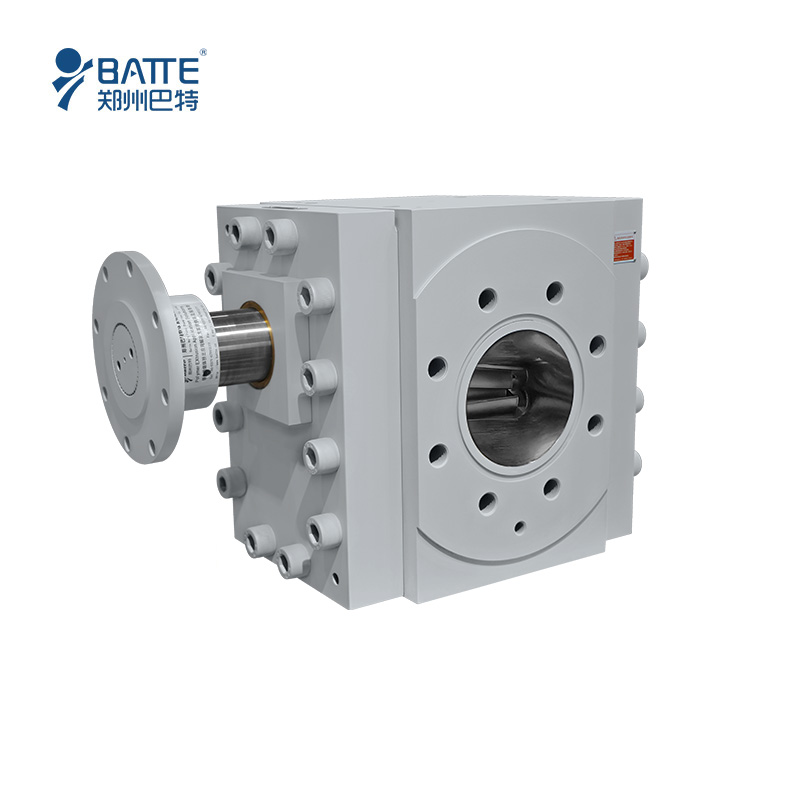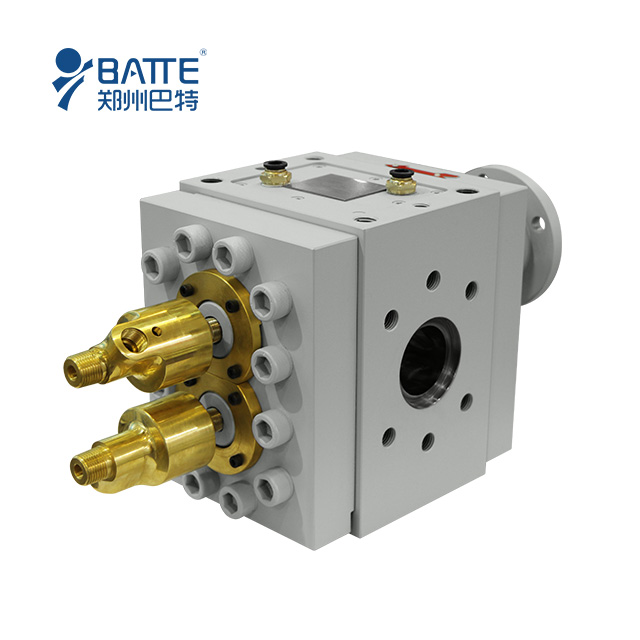
- Position:
- Batte Melt pump > NEWS >
Detailed explanation of melt pump pressure and flow
Introduction to melt pump pressure: The inlet working pressure of the melt pump does not need to be too high, generally 3-5CP. When the inlet is working, the viscosity of the liquid is higher and the working pressure is higher. Sometimes in order to better improve the mixing effect of the wear-resistant materials in the extruder screw, the top of the extruder screw head must have a high working pressure to increase the flow back. At this time, you can increase the inlet of the melt pump of the extruder. pressure. The inlet working pressure is high, and the equipment (such as extruder) can be adjusted up and down to match the flow rate of the melt pump, which is convenient to obtain. The high pressure difference reflects the ability of the melt pump to build pressure. The sum of the working pressure at the inlet and the pressure difference is the working pressure at the inlet. The high working pressure of the melt pump door of the extruder is due to factors such as the die shape, the viscosity of the wear-resistant material, and the flow rate. When selecting the working temperature and pressure of the melt pump, the user considers the application requirements as the standard, and does not need to choose a too high grade. Because the melt pump can work normally under ultra-high pressure, it can be applied only by the material, structure and relative power system of the melt pump; and the melt pump with high temperature and pressure resistance has a higher cost.
For what is the melt pump flow rate and the melt pump displacement, which parameter is used to represent the melt pump flow rate?
Theoretical displacement of the melt pump: The volume of the melt discharged when the melt pump rotates, which is the so-called theoretical melt pump displacement, in cc/r or ccm³/r. Usually the specifications and models of the melt pump are discharged How much is the quantity for qualitative analysis.
The theoretical flow rate of the melt pump: Ignore the hazards of the leakage flow rate. According to the measurement of the melt pump geometry and specifications, within a certain period of time, the melt flowing through the melt pump is called the theoretical flow rate of the pump. Usually divided into volume flow and mass flow. Multiply the displacement of the melt pump by the speed ratio to get the theoretical volume flow in cm³/min or cc/min, l/min. The theoretical mass flow rate of the melt pump obtained by multiplying this value by the relative density of the melt is generally expressed in g/min or kg/h, and expressed in t/h.
Instantaneous flow: The volume of melt discharged by the melt pump at a certain moment, usually refers to the theoretical instantaneous flow accumulation. Specific melt pump flow: The specific melt pump flow refers to the specific melt pump delivery capacity. Because there will be a certain gap inside the melt pump, there will be a certain amount of leakage flow when the melt pump is delivering the melt. Therefore, the actual flow rate is obtained by reducing the theoretical flow rate of various leakage flows.

Any questions about our products, please feel free to contact us! We promise you high-end products and first-class service.Look forward to our cooperation!!!
- sales@battemachinery.com
- +0086-371-67991755




